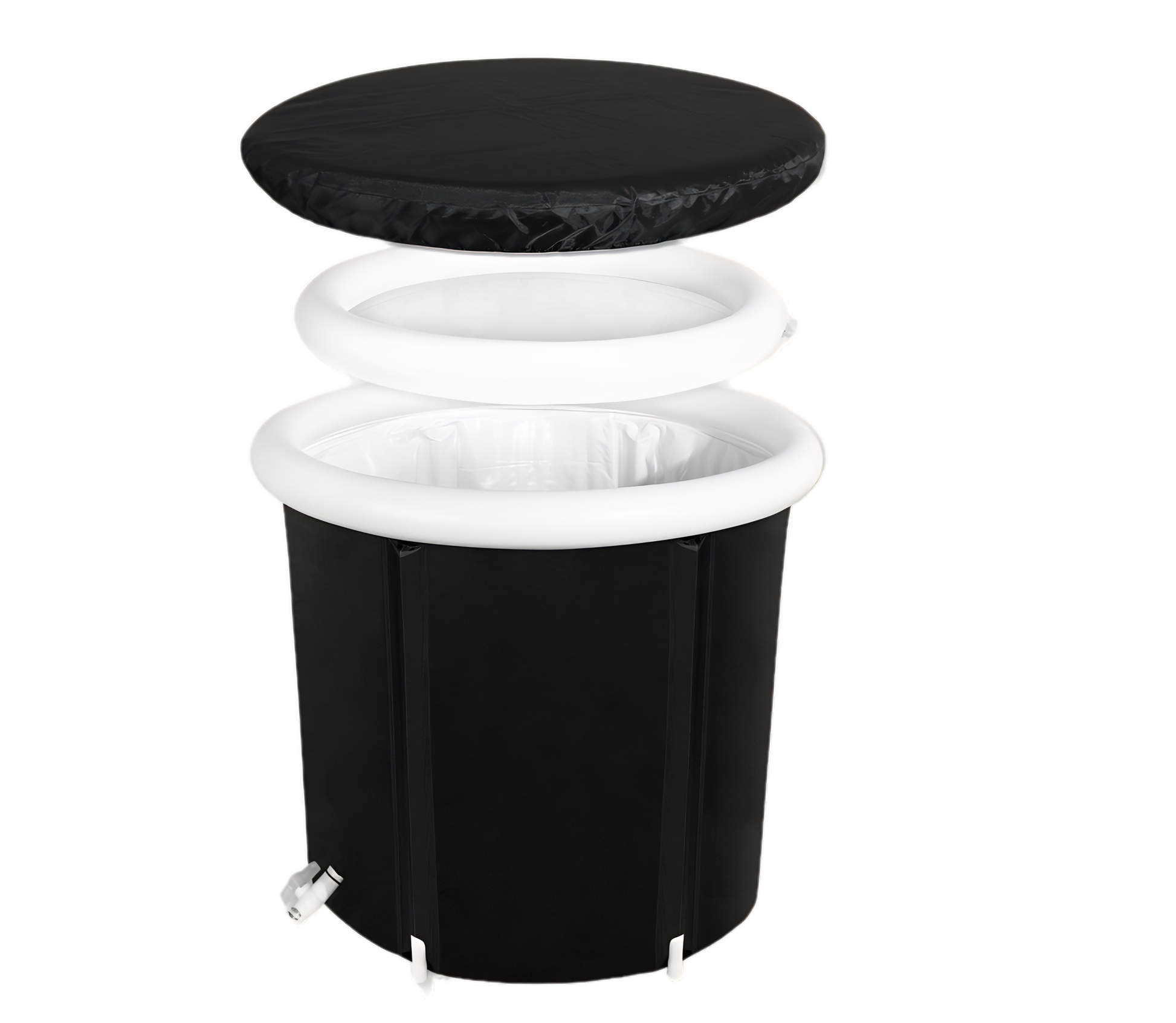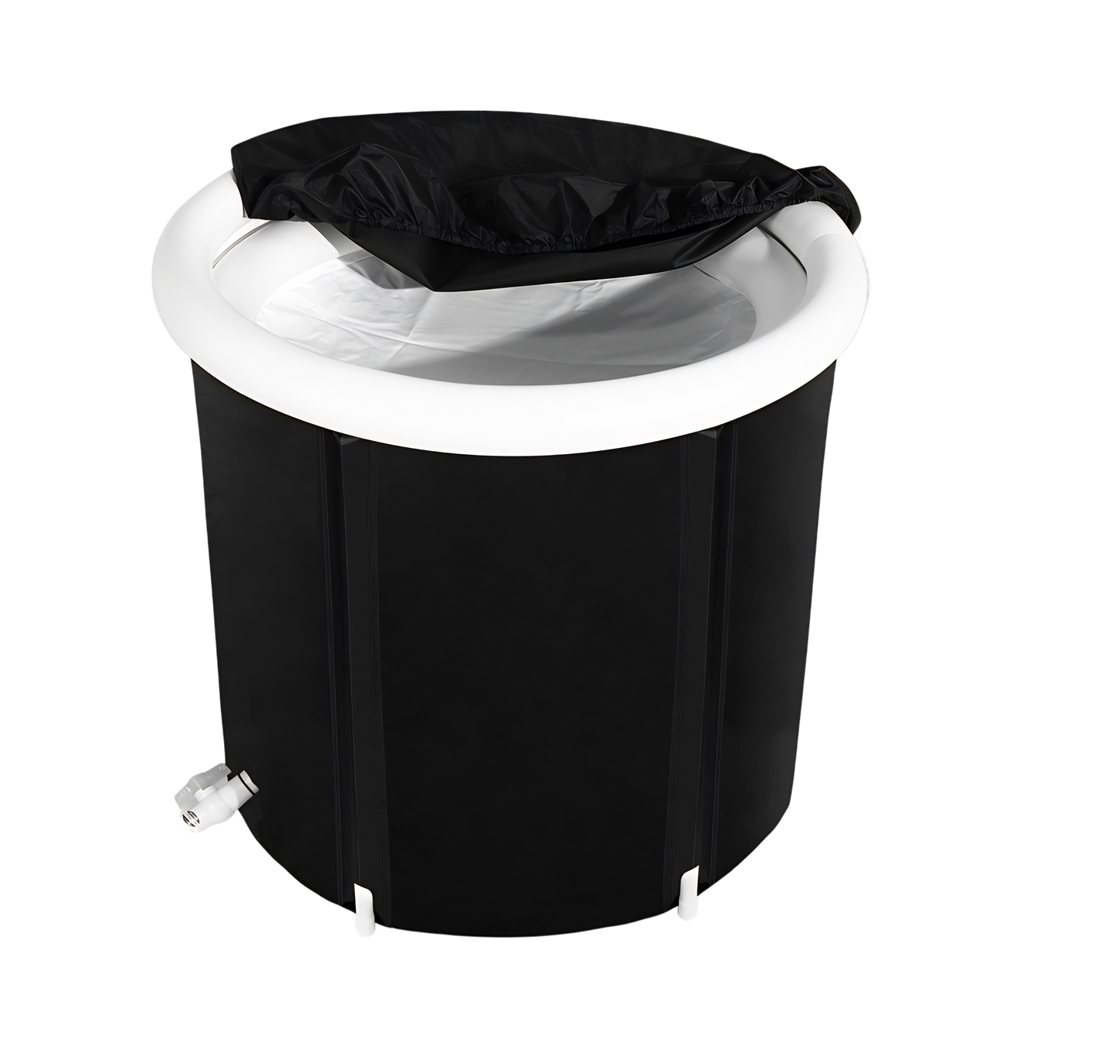Ice baths, also known as cold water immersion or cryotherapy, have gained popularity in the fitness world for their ability to aid in post-exercise muscle recovery. The concept is simple: immerse yourself in ice-cold water after a workout to enhance circulation, decrease inflammation, and speed up healing. Scientific studies have backed the numerous benefits of ice baths, making them a popular choice among athletes and fitness enthusiasts. In this section, we will explore the science behind ice baths, their benefits, and their applications in sports
Key Takeaways
- Ice baths enhance circulation, decrease inflammation, and speed up post-exercise healing.
- Scientific studies support the benefits of ice baths for muscle recovery.
- Athletes in various sports use ice baths to limit inflammation and improve performance.
- Ice baths also provide mental benefits, such as stress management and mood enhancement.
- Timing and personalization are crucial for effective ice bath recovery.
The Science and Benefits of Ice Baths for Muscle Recovery
Ice baths offer several physiological benefits that promote muscle recovery. First, they enhance blood flow by causing vasoconstriction (narrowing of blood vessels) during the cold immersion, which reduces inflammation and provides relief for sore muscles. As the body warms back up, the blood vessels dilate again, causing a "flush" effect that aids in waste removal from tissues. This enhanced blood flow not only delivers vital nutrients to the muscles but also helps remove metabolic byproducts that can hinder recovery.
In addition to blood flow enhancement, ice baths also numb aching muscles, providing immediate pain relief. The cold water numbs the nerve endings, reducing pain signals that are transmitted to the brain. This can be particularly beneficial for athletes who have undergone intense training or competition, as it allows them to recover more quickly and resume their training sooner.
Athletes in various sports, including football, MMA, marathon running, and trail running, use ice baths to limit inflammation, promote healing, and improve performance. The benefits of ice baths extend beyond physical recovery to mental well-being. Studies have shown that cold exposure stimulates the release of endorphins, improving mood and reducing stress. This, in turn, can have a positive impact on cognitive function and overall athletic performance.
Table: Benefits of Ice Baths for Athletes
| Benefit | Description |
|---|---|
| Blood Flow Enhancement | Increases blood circulation, delivering oxygen and nutrients to muscles for optimal recovery. |
| Aiding Waste Removal Process | Facilitates the removal of metabolic byproducts that can impede muscle recovery. |
| Numbing Aching Muscles | Provides immediate pain relief by numbing nerve endings and reducing pain signals. |
| Mental Benefits | Improves mood, reduces stress, and enhances cognitive function for better athletic performance. |
Overall, ice baths are a powerful tool for post-exercise muscle recovery. They offer a range of physiological benefits, including enhanced blood flow, waste removal, and pain relief. Additionally, the mental benefits of ice baths, such as stress management and mood enhancement, can have a significant impact on an athlete's overall well-being. With proper timing and personalization, ice baths can be a valuable addition to any athlete's recovery routine.
Timing and Personalization of Ice Bath Recovery

The timing of ice bath recovery is crucial in optimizing its effectiveness for post-exercise muscle recovery. To maximize the benefits, it is recommended to take an ice bath within 15 to 20 minutes after completing your workout. This timing allows for active recovery and helps limit the inflammatory response that leads to muscle soreness.
However, it's important to consider individual factors and personalize the recovery process. The type of activity undertaken and individual recovery needs can influence the optimal timing for ice bath immersion. Listening to your body and understanding its response to cold therapy is key in determining the ideal time for ice bath recovery.
While ice baths offer significant benefits, it's essential to be aware of potential risks and follow safety measures. Gradual immersion is crucial to allow your body to acclimate to the cold temperature gradually. Moreover, it's important to avoid extremely low temperatures, as they can lead to cold-related injuries. By approaching ice baths with caution and following safety guidelines, you can mitigate potential risks and ensure a safe and effective recovery process.
Ultimately, finding what works best for you is essential in optimizing muscle recovery. Experiment with different timing strategies and personalize your ice bath routine to meet your specific requirements. By doing so, you can harness the power of ice baths to enhance your post-exercise healing and achieve optimal results.
FAQ
How do ice baths aid in muscle recovery?
Ice baths enhance blood flow, reduce inflammation, provide relief for sore muscles, and aid in waste removal from tissues. They also numb aching muscles, providing immediate pain relief.
What are the mental benefits of ice baths?
Ice baths have been shown to improve stress management, cognitive function, and mood.
When is the best time to take an ice bath for muscle recovery?
It is recommended to take an ice bath within 15 to 20 minutes post-exercise to maximize its benefits. However, timing considerations may vary depending on the type of activity and individual recovery needs.
Are there any risks associated with ice baths?
While ice baths offer numerous benefits, caution should be exercised. Safety measures, such as gradual immersion and avoiding extremely low temperatures, should be followed to avoid potential risks.
How can ice baths be personalized for optimal muscle recovery?
It is important to personalize the recovery process based on individual requirements. Finding what works best for each person can help optimize muscle recovery.






